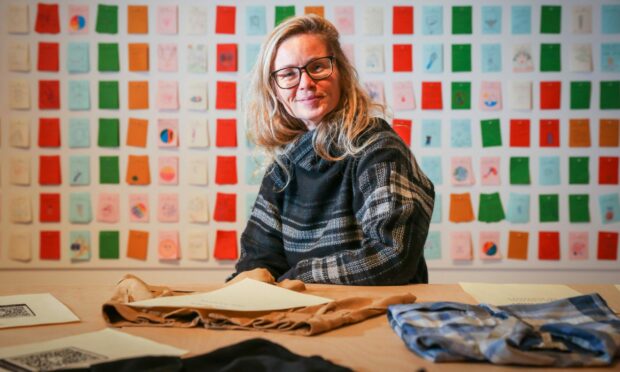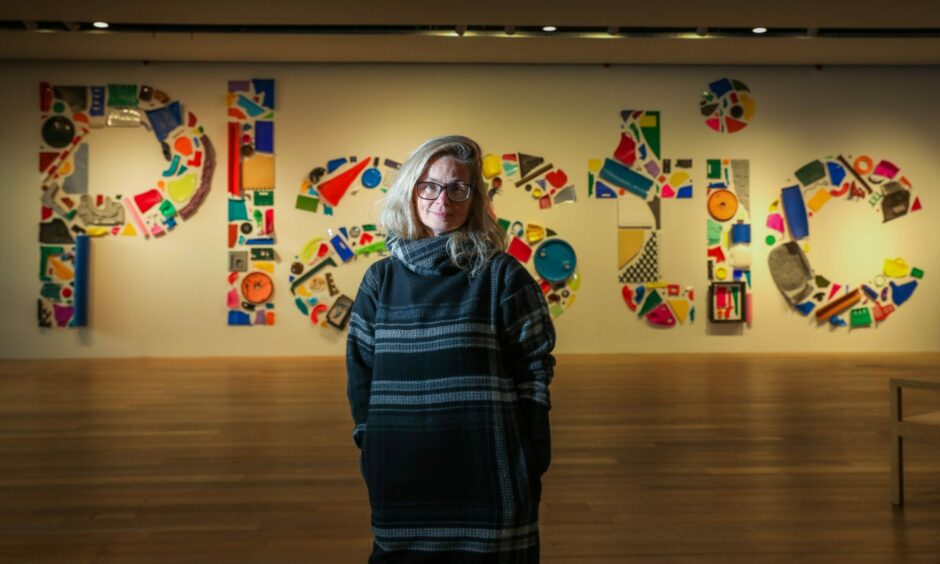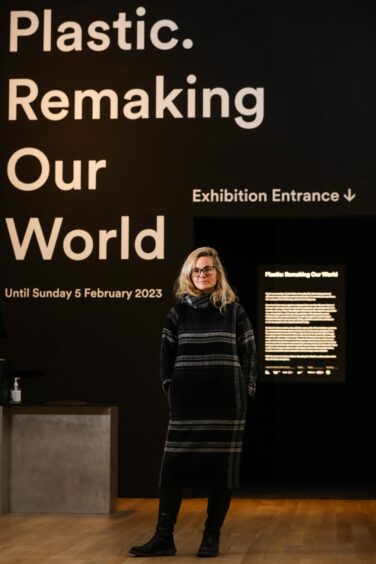When people think of plastic pollution, many picture plastic bottles and bags clogging up the ocean, but clothing is another big contributor to plastic waste.
The plastic in clothes goes unnoticed by many because it is less obvious.
That’s according to Clare Campbell. Clare is the founder of Prickly Thistle, an ethical tartan brand.
She wants to raise awareness of the amount of plastic that lurks in our clothing.
“How many people know that they’re wearing plastic? How many people know that they’re wearing oil?” Clare asked.
“[People] talk about how we need to be less reliant on fossil fuels, but do they know who made their clothes and what they’re made of?”
Clare estimated that 90% of the clothes for sale in the Dundee’s Overgate shopping centre could be made with plastic.
Why is plastic in clothing a problem?
The tartan weaver condemns the fashion industry as it stands and how it encourages consumer thoughtlessness.
She said: “It’s funny how in this space, insecurities and the mental health of individuals are weaponised to make us consume more – and not think about it.
“We’ve made it playful and ‘gamified’ it, but we’ve disconnected from the real environmental impact behind it.”
Every time we wash clothes made from synthetics, small plastic fibres are released – these are called microfibres.
These fragments can end up in waterways and can be eaten by marine life.
That haddock supper you’ve been eyeing up? There could be microplastics in the fish.
And this has a negative impact on human health too.
How do I choose clothes without plastic in them?
It’s all about understanding what you’re buying, Clare said.
“Ask questions.”
“Can you tell me where this is made? If this is recycled, how is it recycled?”
“There are three families of fibres,” she explained.
“You’ve got plant fibres, animal fibres and mineral fibres.”
“Always go for natural fibres (plant and animal) over synthetic.”
Clare pointed out that there was a time before tights that she calls “BT instead of BC”.
But now many of us have become dependent on these synthetic options which contain plastic.
People also buy too much clothing, Clare said.
“It’s about only making what you need and only buying what you need.”
You might think you only buy clothes that are eco-friendly, but you might have fallen victim to greenwashing.
How do I spot (and avoid) greenwashing in clothing shops?
Greenwashing is a common trick by clothing shops today.
This is when a brand twists the truth to appear environmentally responsible to consumers – when they may be anything but.
Companies need to develop “full transparency” and avoid “gimmicks”, Clare said.
To combat being led astray by greenwashing, Clare suggests “making a conscious effort”.
“The tell-tale signs are if it’s a green label – and a polyester label.”
“It’s about taking the time to learn more.
“Before you buy, go on their website and find out how open and transparent [they are].”
And if they aren’t?
Clare referenced a comment made by the UN General Secretary when he addressed COP27 in Egypt this month.
“The UN General Secretary said we’re on the highway to hell, you’ve just lit it up like a runway.”
Clare is one of the speakers to hold a workshop at the V&A’s plastic exhibition.
You can learn more about the problematic substance at the exhibition, on now until February next year.
“Do we want to change the world?” Clare said on Prickly Thistle. “Absolutely.”













Conversation